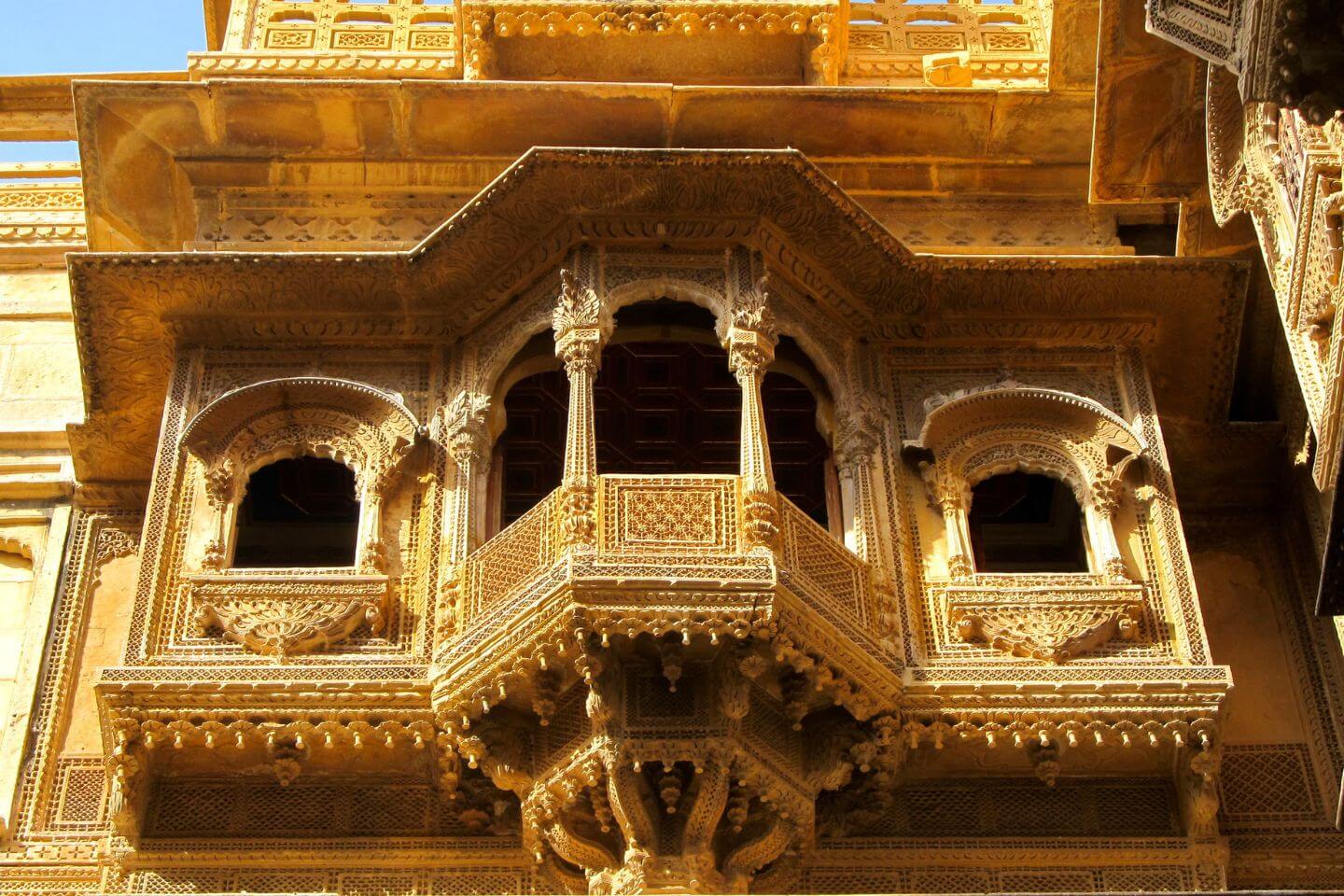Jaisalmer, known as the “Golden City” of Rajasthan, is celebrated for its unique architectural wonders. The havelis, or grand townhouses, found in this city offer more than just an insight into past architectural brilliance—they tell stories of a rich cultural heritage. Built centuries ago, these havelis are symbols of the wealth and status of the merchants and noble families who once resided here. Let’s explore some of the most famous havelis in Jaisalmer and the tales they carry.
The History and Significance of Jaisalmer Havelis
The havelis in Jaisalmer are not just residences; they are artworks in sandstone. The intricate carvings, extensive latticework, and stunning jharokhas (balconies) exemplify the craftsmanship of the artisans who built them. These structures, dating back to the 18th and 19th centuries, were primarily owned by wealthy merchants who engaged in trade along ancient routes. The havelis reflect their affluence, with each one boasting unique carvings, elaborate designs, and decorated facades.
Visitors to Jaisalmer can explore these historical sites with ease. Various cab services in Jaisalmer make it convenient to navigate the city and visit the havelis. Traveling by cab is especially helpful as it allows you to explore not only the havelis but also other historical landmarks at your own pace.
Patwon Ki Haveli: A Collection of Five Stunning Homes
Patwon Ki Haveli is one of the largest and most famous havelis in Jaisalmer. Constructed by a wealthy trader named Guman Chand Patwa and his five sons, this complex consists of five separate havelis. Each haveli in this group has intricate carvings and beautiful wall paintings, showcasing the architectural splendor of Jaisalmer. The interiors are just as captivating, with old furniture, art, and artifacts displayed in various rooms.
When visiting Patwon Ki Haveli, travelers can also take advantage of local cabs in Jaisalmer to explore nearby markets and attractions. This haveli is conveniently located close to other historic sites, making it easy to cover multiple locations in a day.
Nathmal Ki Haveli: The Architect’s Masterpiece
Another captivating structure in Jaisalmer is Nathmal Ki Haveli, built by two brothers, Hathi and Lulu, who were renowned architects. The interesting part of the construction lies in the fact that the two sides of the haveli were built separately by each brother, leading to a slight asymmetry. Despite this, the result is a harmonious blend of designs, featuring both Rajasthani and Mughal architectural styles.
The haveli’s exterior showcases remarkable carvings of flowers, elephants, and other symbols, while the interior includes beautiful paintings made with natural colors. A trip to Nathmal Ki Haveli often brings tourists close to other cultural sites, and local cab services provide a comfortable way to reach these locations. Exploring these sites via cab services in Jaisalmer allows tourists to avoid navigating the narrow lanes on foot, making it a convenient option.
Salim Singh Ki Haveli: The Distinctive Peacock-Shaped Roof
Salim Singh Ki Haveli is famous for its distinctive roof, shaped like a peacock, which makes it stand out from other havelis in the city. Built by Salim Singh, a former prime minister of Jaisalmer, this haveli has a unique architecture with stone carvings and a grand entrance that resembles a ship’s stern. Legend has it that Salim Singh wanted the haveli to be as tall as the king’s palace, but the king disapproved, leading to a height reduction.
Today, visitors admire its stunning balconies and columns adorned with detailed artwork. Exploring Salim Singh Ki Haveli, especially with the help of cabs in Jaisalmer, provides an opportunity to delve into the city’s history comfortably, visiting other parts of Jaisalmer without the hassle of frequent stops.
The Cultural Influence of Jaisalmer Havelis on Modern Times
Jaisalmer’s havelis are a reminder of the city’s prosperity during the time of the Silk Road. Their elaborate designs reflect the wealth, power, and creativity that the merchants and noblemen poured into these structures. Over the years, many havelis have been preserved as cultural heritage sites, while some have even been converted into museums or hotels, allowing visitors to experience their grandeur.
To explore these historical sites thoroughly, using a reliable cab service in Jaisalmer helps tourists make the most of their trip. The cabs offer flexibility, making it easy to cover multiple attractions in a day, and the drivers often have local knowledge to share, adding more depth to your journey.
Planning Your Visit to the Havelis
When visiting Jaisalmer, dedicating a day to explore its havelis will surely be rewarding. The best time to visit is during the cooler months, between October and February, as the summer heat can be intense. Most havelis are located within close proximity to each other, making them accessible through a short drive.
For a more enjoyable experience, it’s wise to book cabs in Jaisalmer in advance, especially during peak tourist seasons. These services offer the convenience of doorstep pick-up and drop-off, letting visitors focus on soaking in the culture and history without worrying about transportation.
Final Thoughts
The havelis of Jaisalmer offer a unique glimpse into the past, with each structure narrating stories of art, culture, and tradition. These historical houses capture the imagination of all who visit, showcasing the architectural legacy of Rajasthan. From the intricate carvings of Patwon Ki Haveli to the remarkable design of Nathmal Ki Haveli, each haveli has its own tale to tell. Exploring these wonders of Jaisalmer is both inspiring and enlightening, and with the availability of local cab services, tourists can experience the city’s rich heritage with ease.

